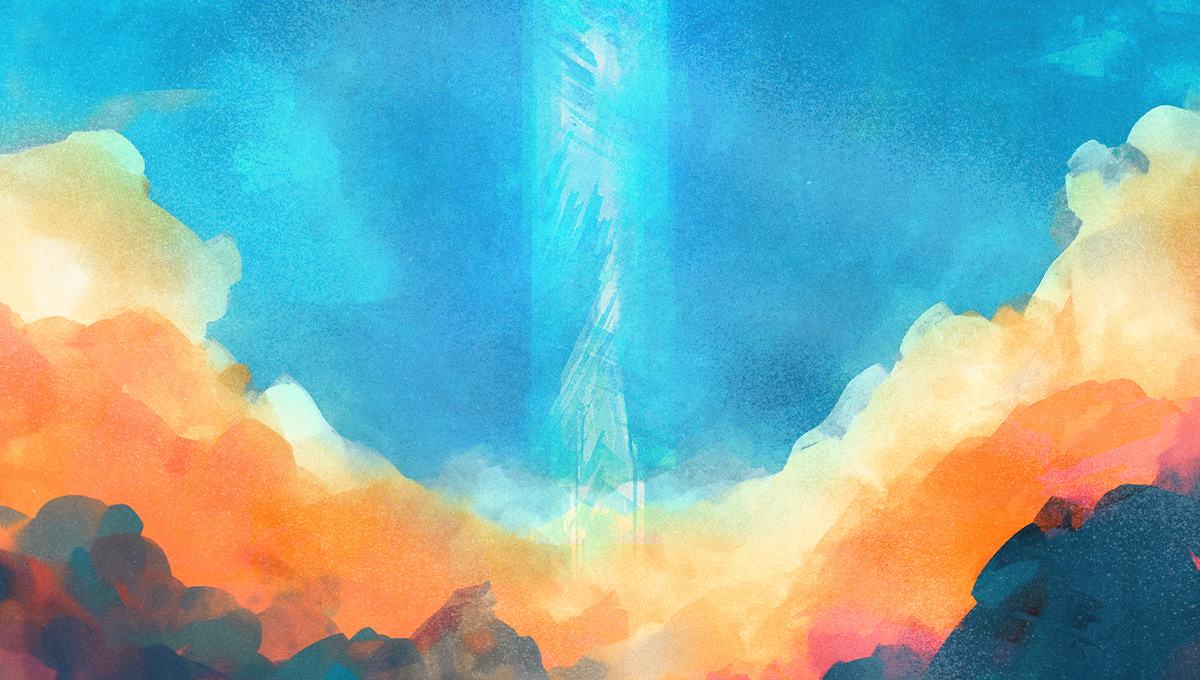Toward the end of the 1400s, a Scottish poet named William Dunbar wrote a poem that stalked the border between his time and every time by speaking to a universal fear.
It is a fear we externalize and avoid, never looking it head on, but at an angle through stylized violence or fictionalized funerals. We professionalize it, keeping the fearful thing at a distance, hidden safely in hospitals, morgues, and funeral homes. We euphemize it, speaking of sleeping, passing away, and a loved one gone to be with the angels.
It is death.
On rare occasions, that fear breaks into our conscience when we attend a funeral for someone we knew and loved. For a brief moment, the lost life rises from the dead in eulogies, only to be buried, and then forgotten within one or two or three decades. A life like vapor.
But it’s not being forgotten that frightens us most. What frightens us most is the thing itself.
Dunbar writes,
He takes the champion of the hour,
the captain of the highest tower,
the beautiful damsel in full flower ...
how the fear of Death dismays me!
He spares no lord for his elegance,
nor clerk for his intelligence;
His dreadful stroke no man can flee ...
how the fear of Death dismays me!
artist, magician, scientist,
orator, debater, theologist,
must all conclude, so too, as we:
“how the fear of Death dismays me!”
The refrain repeats: How the fear of Death dismays me. How easily we distract ourselves with work, entertainment, food and drink, and all the glimmering things that briefly catch the fading light.
And yet, your light is fading. You can be certain of nothing in your future except this one thing: you will die.
Until you find the courage to stare that absolute truth in the eyes, you cannot truly begin to comprehend what Easter is and why it matters.
Easter is the only rational reason any human can transcend Dubar’s refrain and say instead, , “How the fear of Death has fled me!”
Sea Monsters at Eastertide
Traditionally, Easter Sunday not only celebrates the resurrection of Jesus, but also begins a seven-week-long season called Eastertide.
Indeed, the imagery of tides—which isn’t really the meaning of “Eastertide” but stick with me here—is a helpful one.
In the Old Testament, the sea is symbolic of creational disorder and non-order. Ancient Israelites weren’t seafaring people. Its currents, squalls, and waves were confounding and terrifying. Their prophets imagined great beasts rising from its depths and compared those sea monsters to the empires violently oppressing them.
The greatest sea serpent in Hebrew poetry, Leviathan, is so mighty that only Yahweh himself can slay him. Isaiah has a vision of that day,
the LORD will punish with his sword—
his fierce, great and powerful sword—
Leviathan the gliding serpent,
Leviathan the coiling serpent;
he will slay the monster of the sea. (Isaiah 27:1)
Of course, this is visual imagery, not literal prediction. It’s a theme frequently found in Ancient Near Eastern myths: the divine warrior conquering the chaos-dragon rising from the depths. But in Isaiah, the imagery communicates something not seen elsewhere.
Here, the dragon symbolizes not merely chaos but the unstoppable force of death itself.
The warrior slaying the sea serpent is simply a different way of describing what Isaiah writes earlier,
On this mountain he will destroy
the shroud that enfolds all peoples,
the sheet that covers all nations;
he will swallow up death forever. (Isaiah 25:7-8)
When you put it all together, you get a singular image: somehow Yahweh will conquer the death, chaos, and destruction (all symbolized by the sea and sea monsters).
This is why the book of Revelation says of the renewed earth: “There was no longer any sea” (Revelation 21:8).
We may be 2,700 years removed from Isaiah, but the fear of death is still with us, and we haven’t stopped personifying it as monsters and supervillains who must be confronted and destroyed by the courageous.
The Tide of Death Receding
But now we can return to the symbolism of the tide. During Lent—the season before Eastertide—the tide of death is coming in, overflowing the bank, pouring over the levies, flooding all of life. The sea and all its monstrous chaos threaten to dissolve everything we’ve built into meaningless grains of nothingness.
What brings the dismay of Lenten death to a close?
Good Friday.
Jesus himself enters into the sea. Steps into the tide. Lets the chaos engulf him. Lets the monster swallow him. Lets death pull him into the dark place where everything is forgotten. Everything is vapor. Everything is meaningless.
And then Eastertide arrives.
Suddenly, miraculously, the waters that threatened to take the world under recede. And as they retreat, you realize that a single figure remains. He went into death and came out the other side alive. He drank down death, and thereby removed its threatening presence from all creation. He rose from death with the promise that the tide of death would not only go out one day—it would never come back.
Death. Decay. Chaos. Loss. Pain.
All gone.
This is the promise of Easter. The great truth we celebrate at Eastertide. Death’s sting removed forever. The promise of resurrection not just for you and me, but for all of creation. A world without a sea or sea monsters, figuratively speaking.
Yes.
The fear of death dismays me.
But at Eastertide the waters recede.
And the fear of death, once a flood, has fled me.
Because of what Christ accomplished on the cross, we no longer have to fear death. Come celebrate the defeat of death at The Crossing on Easter Sunday. Find service times and details on our Easter page.


